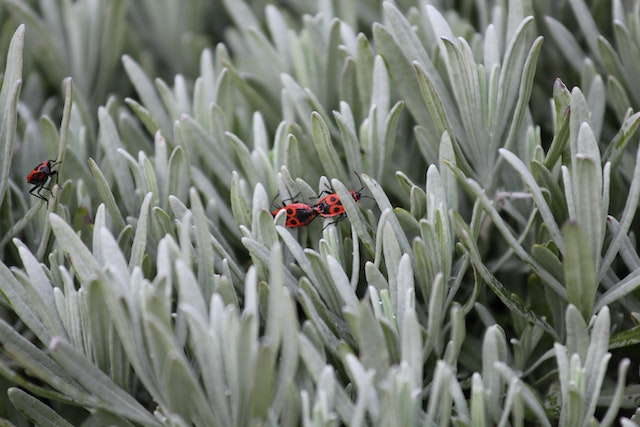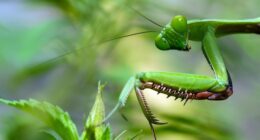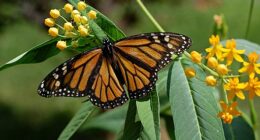Grubs are white or brown in color, have a curved shape body and feed on roots from plants. Chinch bugs, on the other hand, are black and red in color with an oval-shaped body that feeds on leaves of grasses. Understanding this difference can help to determine what type of pest problem you may be facing so you can take the appropriate action to treat it.
What are grubs?
(Image by Nick Windsor from Pixabay )
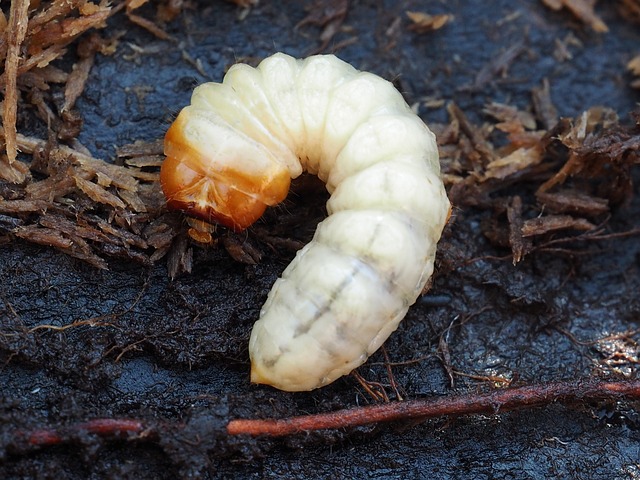
Grubs are small, wingless insects that are typically white or gray in color. They have a small head and a large, curved body. Grubs are often found in soil, dead leaves, and other organic matter.
What are chinch bugs?
(Photo by Pixabay)
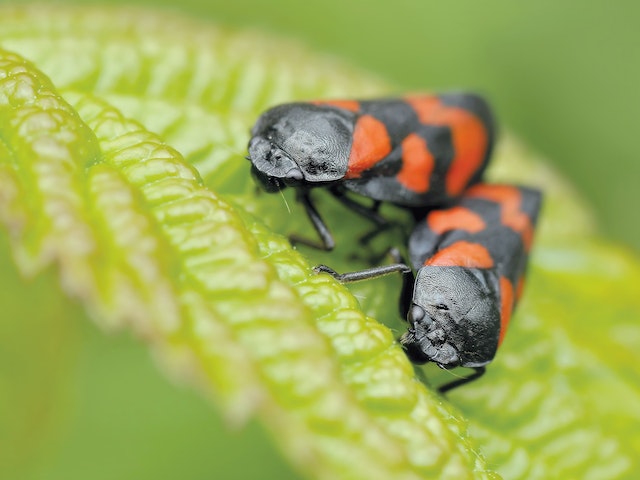
Chinch bugs are small insects that feed on the sap of plants. They are often found in gardens and can cause damage to crops. Chinch bugs can be controlled with pesticides, but they are difficult to control once they establish themselves in an area.
What color are chinch bugs?
Chinch bugs are small, black insects that feed on the leaves of plants. They can be a nuisance in gardens and yards, and can cause damage to grassy areas.
The difference between grubs and chinch bugs
There are several key differences between grubs and chinch bugs. For one, grubs are small, white larvae that typically measure no more than 1/2 an inch in length, while chinch bugs are small, black insects that can reach up to 1/3 of an inch in length. Additionally, grubs feed on the roots of plants and grasses, whereas chinch bugs feed on the leaves and stems of these same plants. This difference in diet can lead to different types of damage to your lawn or garden; grubs typically kill grass by cutting off its access to water and nutrients, while chinch bugs cause yellowing and browning patches on leaves as they suck out the plant’s juices. Finally, though both pests can be harmful to your outdoor areas, chinch bugs are generally considered more damaging since they reproduce much more quickly than grubs.
How to get rid of grubs and chinch bugs
If you have grubs in your yard, you may be noticing more than just an influx of pests. These grubs can cause some serious damage to your lawn if left unchecked. Thankfully, getting rid of grubs is relatively simple and there are a few different methods you can use.
One popular method is to treat your lawn with an insecticide that specifically targets grubs. These products are readily available at most hardware stores and will usually come in a granular form that is easy to apply. Simply spread the insecticide over your lawn according to the package directions and water it in well. This should kill any grubs that are currently present and help to prevent future infestations.
Another option for getting rid of grubs is to introduce beneficial nematodes into your lawn. Nematodes are tiny parasitic worms that attack and kill grubs when they come into contact with them. They are safe for humans, pets, and plants, making them a great eco-friendly option for pest control. You can purchase nematodes online or at some garden supply stores. Once you have them, simply mix them with water according to the instructions and then water them into your lawn.
If you have chinch bugs in your yard, you may be wondering how to get rid of them without harming your grass. Chinch bugs are small insects that feed on the sap of grass plants, which can quickly lead to brown patches in your lawn. While there are a few different
How do I know if I have fungus or grubs?
There are a few key differences between grubs and chinch bugs. For one, grubs are usually larger than chinch bugs. They also have a different shape – grubs are shaped more like a C, while chinch bugs are shaped more like an oval. Additionally, grubs are typically found in the soil, while chinch bugs are often found on plants.
If you’re not sure whether you have grubs or chinch bugs, there are a few ways to tell. One is to look for damage to your plants – chinch bugs will often suck the sap out of plants, causing them to wilt or turn yellow. You may also see small white grubs crawling around in the soil near your plants. If you suspect you have either of these pests, it’s best to contact a pest control professional for help.
What kills grubs right away?
If you’re dealing with grubs in your lawn, you’re probably wondering how to get rid of them as quickly as possible. While there are a variety of methods for getting rid of grubs, some methods will work faster than others. Here are a few ways to kill grubs right away:
- Use insecticide – Insecticide is one of the most effective ways to kill grubs quickly. There are a variety of insecticides available on the market, so be sure to choose one that is specifically designed to kill grubs.
- Apply nematodes – Nematodes are tiny parasitic worms that can be used to kill grubs. They enter the grub’s body and release bacteria that kills the grub from the inside out.
- Use milky spore powder – Milky spore powder is a biological control method that uses a specific type of fungus to kill grubs. The powder is applied to the soil and then infects the grubs as they feed on the roots of grasses and other plants.
- Introduce predators – Another way to kill grubs quickly is to introduce their natural predators into your lawn or garden. Common predators include skunks, raccoons, and birds like crows and blue jays.
- Drench with boiling water – If you’re desperate to get rid of grubs immediately, you can try drenching them with boiling water. This method will kill the
Are there different types of grubs?
There are different types of grubs, but the most common type is the white grub. White grubs are the larvae of beetles, and they feed on the roots of grasses and other plants. They can cause severe damage to lawns and gardens, and can be difficult to control. Other types of grubs include Japanese beetle grubs, European chafer grubs, and green June beetle grubs. These grubs also feeding on plant roots, but they are not as damaging as white grubs.
What eats grubs at night?
There are many animals that eat grubs at night, including opossums, raccoons, skunks, and Armadillidiidae. These animals dig through the soil to find grubs to eat.
What attracts grubs?
Grubs are attracted to lawns that are healthy and well-watered. Chinch bugs, on the other hand, are attracted to lawns that are dry and stressed.
How do I know if I have chinch bugs?
If you think you might have chinch bugs, the first thing to do is check your lawn for signs of damage. Chinch bugs prefer to feed on St. Augustine grass, and they tend to attack the grass in sunny areas of the lawn first. Look for small, circular patches of dead grass that seem to be spreading.
If you see signs of damage, you can try to confirm the presence of chinch bugs by checking for them directly. Put on some gloves and part the grass in the damaged area to look for small, black insects with white wings. If you find them, you’ll need to take steps to get rid of them before they cause more damage to your lawn.
What do chinch bugs turn into?
Once chinch bugs have reached maturity, they will mate and lay eggs. A single female can lay up to 300 eggs in her lifetime. The eggs are laid in the cracks of sidewalks, driveways, and other hard surfaces. After about 10 days, the eggs hatch and the nymphs (immature chinch bugs) begin to feed. They will go through 5 molts (shedding their exoskeleton) before reaching adulthood. The entire life cycle from egg to adult can take as little as 6 weeks under ideal conditions.
Do chinch bugs hate water?
One of the most common questions people have about chinch bugs is whether or not they hate water. The answer is yes, chinch bugs do hate water. In fact, one of the best ways to get rid of them is to simply drown them. This can be accomplished by using a garden hose with a sprinkler attachment and setting it on low for several hours. The chinch bugs will eventually drown in the water and die.
Do chinch bugs eat roots?
While both grubs and chinch bugs feed on plant roots, chinch bugs are more specific in their diet and only feed on the roots of grasses. This makes them a serious pest of lawns, as they can quickly kill patches of grass. Chinch bugs are small, black insects with white markings on their wings. They are typically found in hot, dry areas and are most active during the summer months.
Can grass recover from chinch bugs?
Yes, grass can recover from chinch bugs if the infestation is not too severe. Chinch bugs feed on the grass by sucking out the sap, which can damage or kill the grass. If the infestation is caught early, you can remove the chinch bugs by hand or with a pesticide. The grass will then need time to recover from the damage.
Featured Image By – Photo by Vesna D.
